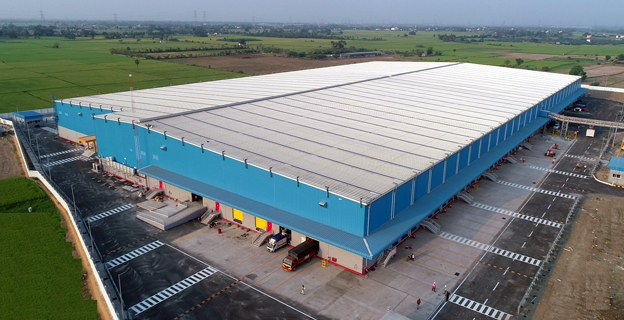TVS Industrial & Logistics Parks (TVS ILP), a leading logistics park developer, is embarking on a new phase of growth with a keen eye on the eastern and northeastern regions of India. However, as the company ventures into these territories, it encounters hurdles in land acquisitions and must adapt to evolving market demands.

Chief Operating Officer Manikandan Ramachandran expressed the company’s strategic shift, stating, “Now we are focusing on Siliguri in Sikkim and Guwahati in Assam. We are strong in South India and from the southern region we want to move to the eastern region of India, and that’s where our primary focus is now.”
Ramachandran highlighted the forecasted demand for warehousing space in both Siliguri and Guwahati, driven by various sectors such as FMCG, e-commerce, pharma, and third-party logistics (3PL) companies. This move aligns with the broader growth trajectory of the Indian warehousing market, expected to reach Rs 2,872 billion by 2027, according to Research and Markets.
With a current portfolio spanning 10 million square feet across 18 facilities in 11 Indian cities, TVS ILP plans significant expansion. Ramachandran outlined the company’s ambitious targets to increase its warehousing space to 13 million square feet by the end of the next fiscal year and to 20 million square feet in 41 cities by 2027. This expansion strategy emphasizes proximity to consumption and demand centers, with plans to develop facilities every 400 kilometers across the country.
TVS ILP’s growth trajectory has attracted substantial investments, including $100 million from NIIF Infrastructure Finance (NIIF IFL) and a significant stake acquisition by Lingotto, an investment management company owned by Dutch holding company Exor. Ramachandran stated the company’s annual investment of Rs 1500 crore aimed at adding five million square feet of space, with an expected revenue of Rs 100 to Rs 120 crore per year.
The company’s recent projects underscored its commitment to client satisfaction and operational excellence. Customized warehouses for multinational companies like Nestlé and First Solar have demonstrated TVS ILP’s ability to cater to diverse client needs across different sectors and regions.
Despite the promise of expansion, challenges loom, particularly in land acquisition in the northeastern states. Ramachandran acknowledged the difficulty of finding suitable land in these regions, citing it as a significant barrier to entry. Nevertheless, he remains optimistic about the company’s prospects, driven by strong demand from sectors like FMCG.
TVS ILP’s strategic choice of locations for Grade A facilities, including non-Tier 1 or Tier 2 cities, reflects a focus on leveraging location advantages and catering to evolving market dynamics. Ramachandran emphasized the importance of strategic positioning to serve consumption markets efficiently, citing examples like Madurai and Hosur.
As the logistics sector undergoes transformation, Ramachandran emphasized the need to redefine Grade A warehouses to meet evolving client requirements. This adaptability underscores TVS ILP’s commitment to staying ahead of industry trends and maintaining its position as a market leader.
MTNews Desk
(Source: Indian Transport & Logistics News, Mar-Apr 2024 issue)



